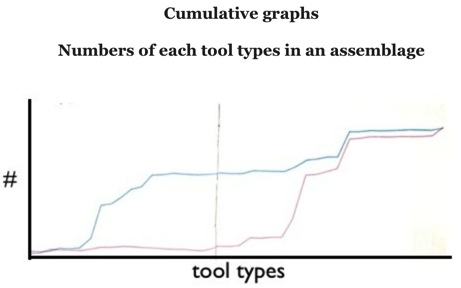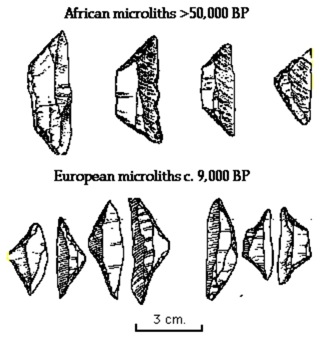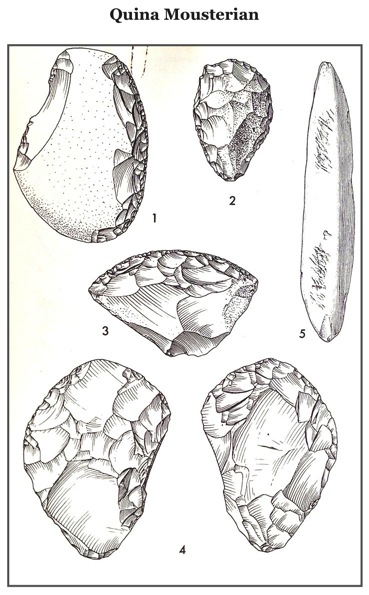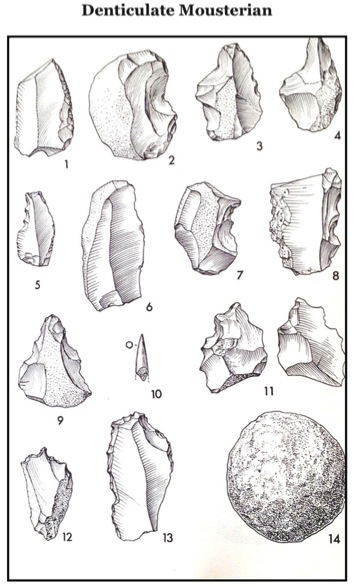Typology is used to classify i.e. name tools so that archaeologists can easily communicate the kind of tools found in an assemblage. Typology has been used to classify and date cultures in that type fossils have been used to ascribe an assemblage to a culture and time. For example finding a handaxe was used to interpret the culture as Acheulian and date the find to the lower Palaeolithic. This practice was abandoned because ‘type fossils’ were found in different contexts and dated by other means, mainly stratigraphy and more recently by metric dating techniques such as radio carbon. Handaxes for example are found in some assemblages stratigraphically dated to the middle palaeolithic and associated with Neanderthals.
A development was to abandon type fossils but use collections of tools by counting the numbers of different types in an assemblage particular the devolopment of cumulative graphs predominantly used by Francois Bordes. These were used to classify assemblages particularly in the middle palaeolithic in France called Mousterian
And so we have Quina mousterian, Denticulte Mousterian and so on.

The main use of typology is to classify stone tools in the same way that species are classified in biology or quarks in physics.
Classification provides a common language so that any lithic archaeologists will know what is meant by a “concave endscraper”.


